Sun photography technique! How to shoot sunspots and precautions
- 岩本貴志

- Jul 12, 2020
- 9 min read
Last time, I covered the sunspotless sun.
This time, we will introduce how to shoot the sun and sunspots and points to note.
It's a lot of fun to see how the sunspots change.
You may need a telephoto lens, but shooting is fairly easy!
Here are some notes and how to shoot.
* Shooting the sun is extremely dangerous, such as damage to equipment and the risk of blindness.
Please try to shoot after fully understanding the precautions.
If you don't understand or feel uneasy, please do not try shooting.
table of contents
Sunspots that do not come out easily
How to shoot the sun
Lens suitable for sun photography
Sun, captured image
For more detailed images
Depiction performance of D850 that lost to D800E
Sunspots that do not come out easily
It's fun to observe the sun yourself.
■
1, sunspots that do not come out easily
Extreme weather has recently become a hot topic.
There is no doubt that the activity of the sun, such as long rains, has some influence.
The earth that constantly receives solar energy.
The energy that the earth receives from the sun is equivalent to the energy that all human beings have consumed since the latter half of the 20th century in just one hour.
Compared to the Mother Sun, human activities may be insignificant.
It is a clear fact that such a source of energy, the mother sun, and even small changes in activity will bring about major climate changes on the earth.
If this Mother Sun were to be in a bad mood and change the energy it emits by as much as 10 percent, there is no doubt that ridiculous things will happen.
Fortunately, even if the mood of the sun changes, the change is only about 0.1%.
Thanks to that, life is stable and prosperous on the earth.
There are as many variable stars in the universe as there are stars that can significantly change the amount of energy released.
As I mentioned in my last blog, the activity of the sun is very weak now.
The change in activity in the 11-year cycle, the change in the 100-year cycle, and the weakest period are now overlapping.
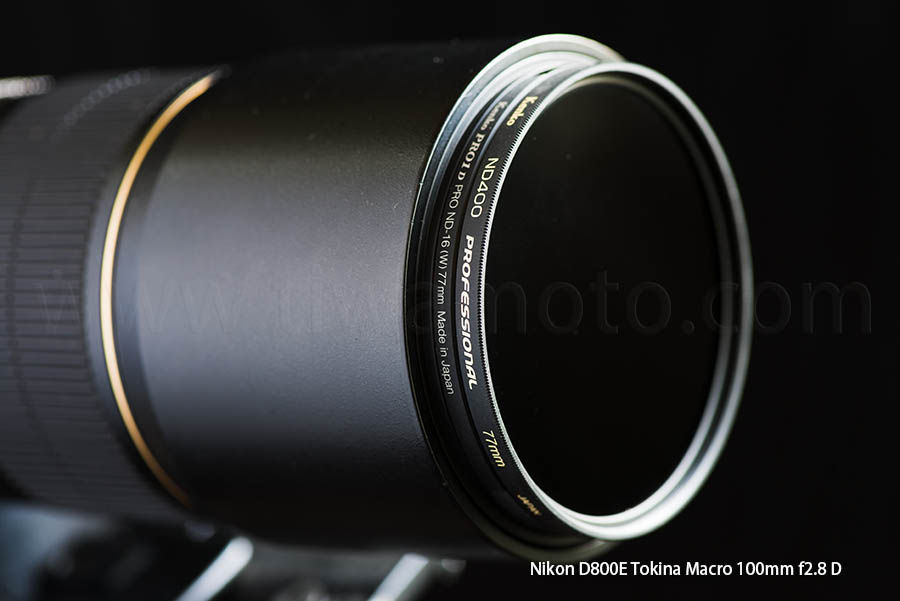
Kenko Tokina ND400 and ND16 are used in layers, total ND6400
2, how to shoot the sun
To shoot the sun, the subject is extremely bright, so an ND filter is essential.
* Never point the telephoto lens at the shining sun without attaching the ND filter! Also, do not look directly at the sun with the naked eye!
It may cause the equipment to break or hurt your eyes.
The sunlight collected by the lens is extremely dangerous!
If you point the camera at the sun without an ND filter, the inside of the camera will melt in a blink of an eye!
If you fully understand these dangers and take defensive measures, it is quite easy to shoot the sun.
It is not dangerous if you fully understand and take defensive measures.
Since the shutter speed is fast, you can easily take a picture of the surface of the sun by hand.
The use of an ND filter,
The brightness of the sun is so high that it needs to be dimmed a considerable amount!
A total of ND3200 or higher is recommended.
The caretaker uses the ND400 and ND16 in layers when shooting the sun with a telephoto lens.
In total
400x16 = 6400
Equivalent to ND6400.
The amount of dimming is not enough with just one ND400, so I use multiple ND filters.
If you want to shoot specifically for the sun, you can use ND100000, but since it is a filter for the sun, it can hardly be applied to other shooting.
If you use it exclusively for the sun, there is no filter on the right side, but I personally recommend the method of stacking these two ND400 and ND16, which can be applied to other shooting.
When stacking, it is basic to put the filter that dims more greatly on the outside.
The order is ND400 → ND16 → camera lens.
Dimming first to reduce internal reflections! That is.
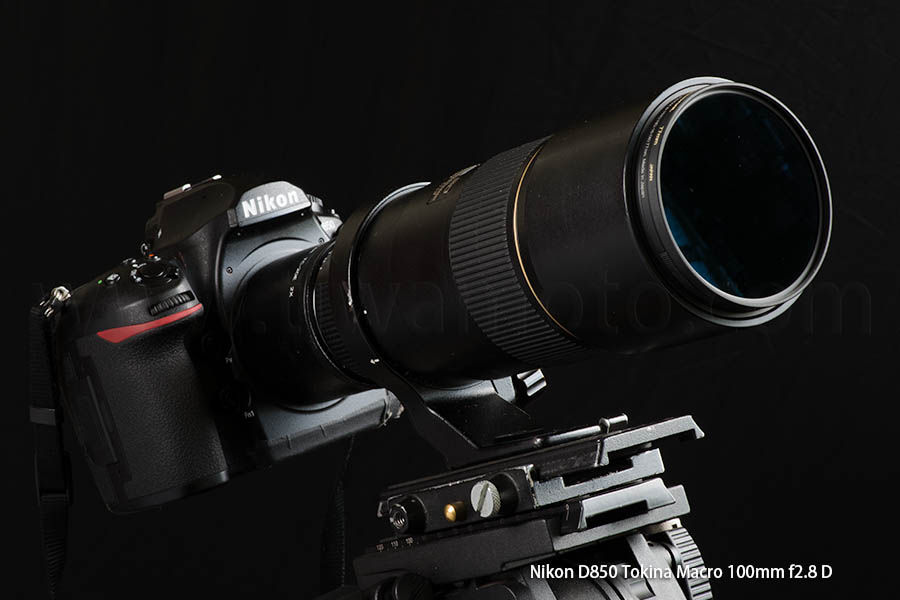
600mm solar photography system
3, lens suitable for sun photography
If the ND filter is firmly attached, you can shoot the sun with any camera or lens. However, if you want to take a detailed picture of the changes in sunspots, you will need a telephoto lens.
Although it is the era of zooming, we recommend a short focal length telephoto lens that has a fixed focal length and can be taken with the same focal length because it is a continuous photograph that captures daily changes in black spots, so-called time-lapse photography.
There is no problem with a zoom lens.
Another advantage of single focus lenses is that the number of lenses is small, and all performances are optimized for the focal length, so there are many lenses that can be reassured in terms of image quality. ..
In most cases, the caretaker uses the Nikon AF300mm f4D ED with a teleconverter for sun photography.
A 2x telephoto lens (AF-I TC-20E) is attached to a telephoto 300mm f4 and used as a 600mm f8.
The sensitivity is ISO64, the aperture is f11 with one aperture, and the shutter speed is 1/6400 seconds.
With this shutter speed, you can hold it at 600mm.
Lens configuration
Nikon AF300mm f4D, lens configuration is 10 elements in 6 groups.
The teleconverter TC20E has 7 elements in 6 groups.
Since there are two filters, there are two in two groups.
A total of 19 elements in 14 groups including the filter
When shooting a high-brightness subject such as the sun, it is better to have as few shots as possible.
Is this true for all subjects ...
The reason why there are 14 groups even if the teleconverter and the filter are overlapped is that the short focus lens uses few lenses.
14 groups means 28 reflective surfaces.
By the way, Tamron's second-generation 150-600mm lens configuration is 21 elements in 13 groups.
If two filters are stacked, one group will be added.
Most of the recent zoom lenses use about this number of lenses.
You don't have to worry about it because the performance of recent lenses and coatings is very good and the transmittance is high.
Still, the smaller the number of lenses, the better.
4, sun, photographed image
Now, I would like to introduce the latest state of the sun taken with the above system.
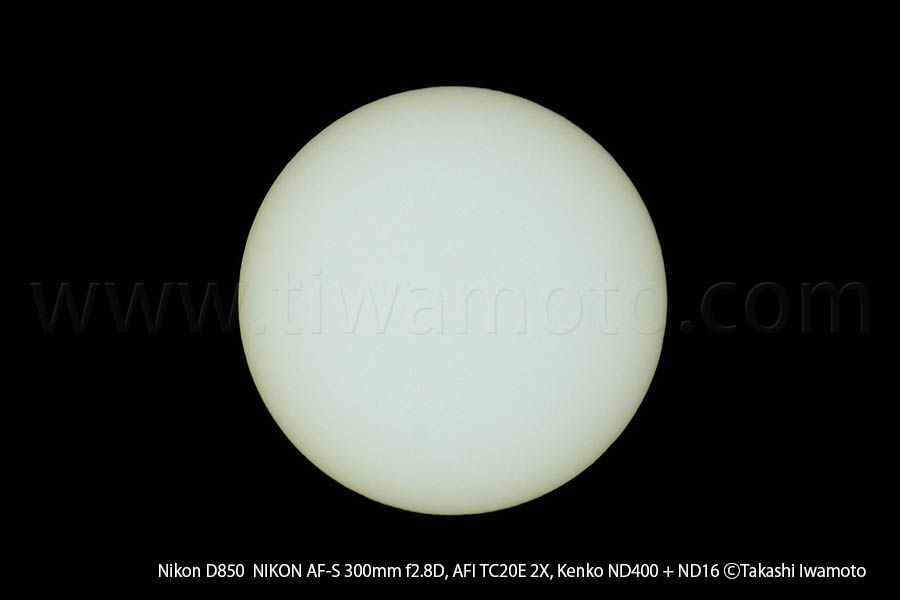
No sunspots appear as of July 12
With the latest high-pixel sensor, even 600mm can project quite small details.
The trick to shooting is to take many pictures.
The state of the atmosphere in the daytime heated by the sun is very unstable, and the way each image is captured is different.
The state of this flickering changes from moment to moment and is not uniform.
Often, part of the surface of the sun is good and part of it is bad.
So, in order to take a more stable shot, it is necessary to take many shots.
Also, in order to emphasize the surface condition later, it is recommended to shoot in RAW with as many bits as possible.
The photo above is taken in the morning, so the left side is north.
The photo below shows the contrast increased according to the surface of the sun.
Same photo as above.
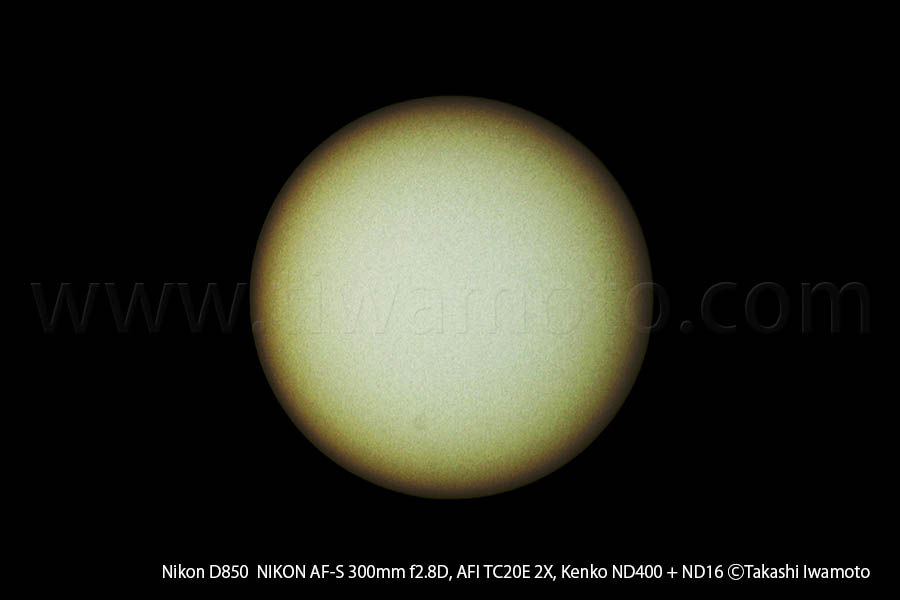
When I increased the contrast, I could see the activity on the surface of the sun.
It's small and difficult to understand, so I enlarged it to the same pixel size to make it easier to understand.
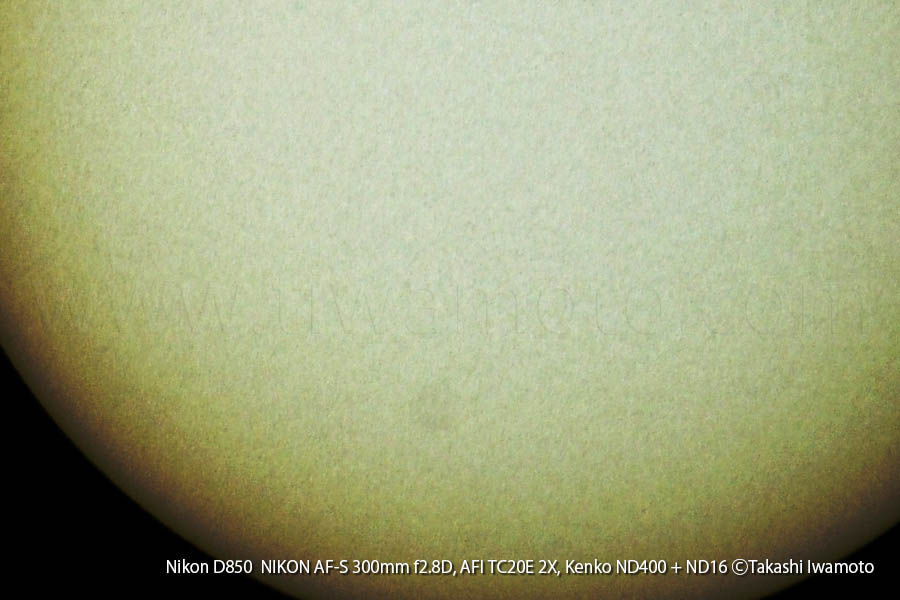
Pixel 1x, which makes it easier to understand subtle shades
You can see the surface of the sun and the state of the photosphere.
The photosphere is a hot gas that shines at about 6000 degrees, and the photograph shows that the surface of the sun is convection with Ujauja.
The darker the periphery, the evidence that there is a translucent gas that blocks the light outside the shining photosphere. This gas layer is called the chromosphere.
The pattern of the photosphere is called granular spots, but considering that the diameter of the sun is 108 of the earth, it can be seen that the size is global.
You can feel the scale and greatness of solar activity just by looking at these pictures.
In the digital age, it is possible to observe the state of the sun so far with such simple equipment (personal impression).
5, for more detailed images
After that, I added two more teleconverters to project the sun image in more detail.
The lens is the same as the Nikon 300mm f4 (Sanyoung), but the TC-201 (2x teleconverter) is followed by the AF-I TC-14E (1.4x teleconverter) and TC-301 (2x teleconverter).
Now the total focal length is
300 x 2 x 2 x 1.4 = 1680 (mm)
By the way, what is the number of lenses?
TC-301 5 groups 5 sheets
AF-I TC14E 5 elements in 5 groups
By superimposing these teleconverters on 19 elements in 14 groups, the total lens configuration is 29 elements in 24 groups.
By the way, Sigma's high-performance high-magnification zoom 60-600mm lens configuration is 25 elements in 19 groups.
With a protective filter, there are 26 elements in 20 groups.
When the ND filter is removed, there are 27 elements in 22 groups, so there is no big difference.
Even so, there are many 24 groups, so I'm a little worried if it will look clear.
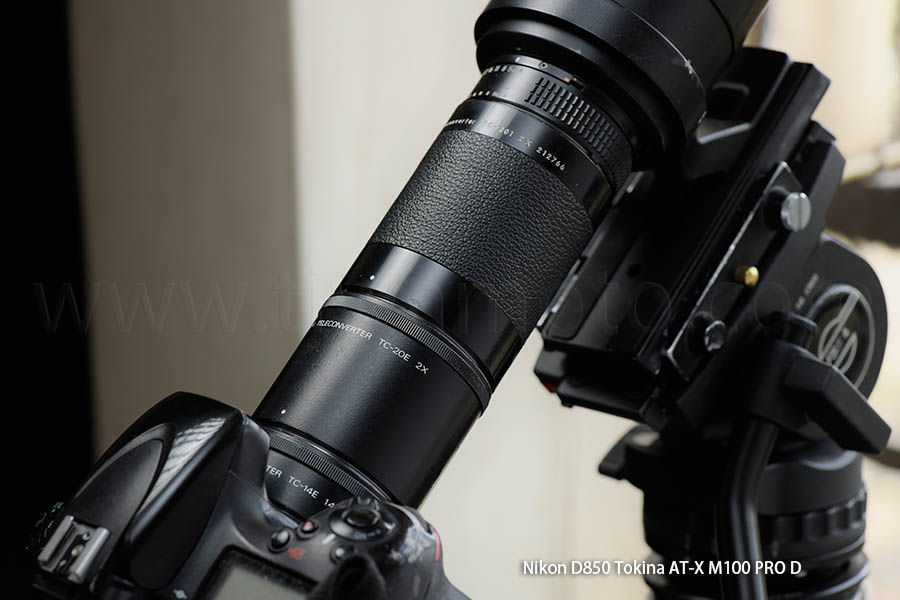
Triple teleconverter, total 1680mm
Taken with this new system focal length of 1680mm, you can see the sun in full size at just the right size.
In addition, I took about 10 sun images and devised a method to composite about 6 of them with good image quality on Photoshop to make the finish clearer.
It's not a big deal, but the granular spots on the surface of the sun have come to be reproduced more clearly.
The image below was shot and edited that way.
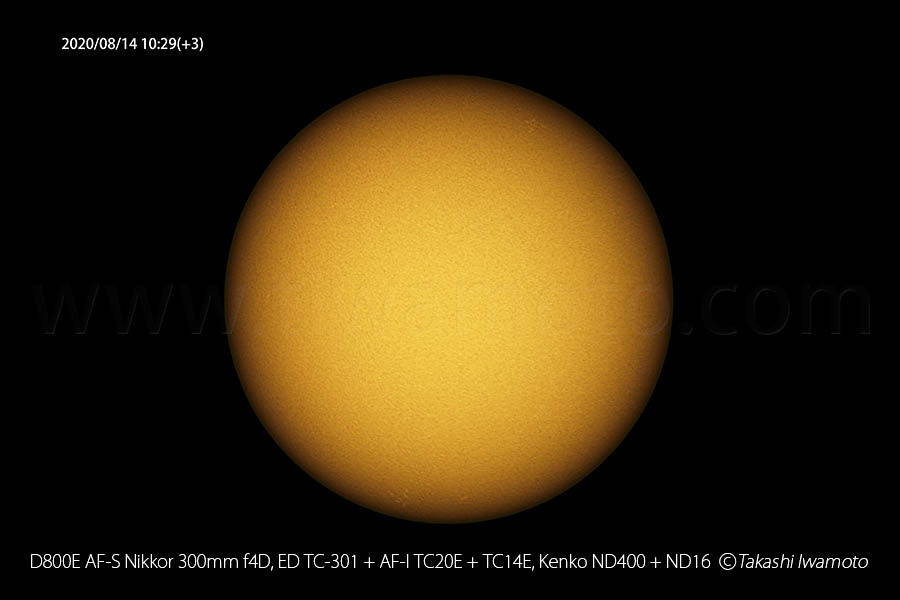
Much better than the D850 single shot image
By increasing the magnification with the teleconverter and compositing the images, the images are much more detailed than the images taken last time.
Depiction performance of D850 that lost to D800E
Following the shooting of the night sky, the shooting of the sun also improved the depiction performance of the D800E compared to the D850.
I found out by comparing these two models, but the stickiness of the highlights and the difficulty of overexposure
I felt that the D800E was about two ranks higher than the D850. (Personal impression)
The noise of the D800E does not cause much gradation, so it smoothly describes the details of the subject.
On the other hand, it was found that the D850 has a lot of gradation skipping in the noise and tends to be reproduced as ugly and dirty, so it becomes dirty when enlarged.
So, I've been using the D800E for the rest of the sun photography.
Sunspots that do not come out easily
Vitiligo is seen, and there is a sign that black spots are likely to appear, but almost no black spots appear.
Solar activity remains extremely weak (as of July 2020).
It has been announced that the 24th period of the cyclical changes in solar activity, which has been counted since 1755, ended in December 2019. The 25th period is supposed to have started now, but the solar activity is still sluggish and there are almost no sunspots.
If the slump continues, will the time of announcement be corrected?
If the solar activity remains sluggish, I feel that long rains will continue in various parts of the country next year.
Perhaps because of the long rains in Kenya, the water levels of several lakes continue to rise, and the local residents are evacuating.
The causes of extreme weather are intertwined, and it may not be so simple.
However, the sun brings most of the energy to the earth, and also protects the earth from ultra-high energy cosmic rays by the solar wind, which brings many benefits.
There is no doubt that there is some causal relationship.
Extreme weather is nothing unusual if you look at it on a time scale of thousands or millions of years.
Fun sun observation
Even if you don't wait for the announcement of the observatory or news, you can observe and confirm the solar activity by yourself as long as it is sunny.
Why don't you try the sun, which you can easily shoot with an ND filter and a telephoto lens?
Perhaps it is the beginning of the second stage of the current state of the Earth, the Maunder Minimum, where the sunspots that occurred 400 years ago never appeared.
If so, it seems that the current unseasonable weather can be explained.
If so, will heavy rain continue for 70 years?
Is it okay for the world's largest dam?
So, it's around this time that I'm worried about solar activity.
* Finally, note again!
* When shooting the sun, never look at the sun directly with the naked eye!
Do not point the camera directly at the sun without an ND filter! (The inside of the camera melts!)
At least a total of ND filters, ND3200 or more should be installed!
Use the ND filter that is attached to the tip of the lens and the sun side! (It is dangerous to use only the rear filter, and the light collected by the lens will also melt the ND filter!)
Don't keep your camera pointing at the sun just because you have the ND filter installed! Turn the camera away from the sun when you're done shooting! (Not all harmful light is blocked.)
If you want to keep your camera pointing at the sun, use a fully dimmed sun filter such as ND100000 or a sun filter!
It is very dangerous to shoot the sun, so be sure to observe the above points!
If you don't understand even one of the above, or if you don't understand enough, don't try to shoot the sun!
If you are using a tripod to see the sun, you can easily see it without looking at the sun by looking at the shadows of the camera and lens projected on the ground.
Don't look at the sun directly!
If you want to see it, use a solar eclipse glass!
Somehow, it's just dangerous!
Comparing the great sun and its scale, you can feel the smallness of the earth and the tinyness of the arrogant human beings.
■
Related article
Sunspot-free sun, what time will it come with sunspots?
Contrary to expectations, solar activity is active!




Comments